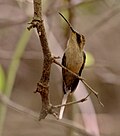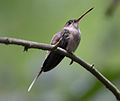Superregnum: Eukaryota
Cladus: Unikonta
Cladus: Opisthokonta
Cladus: Holozoa
Regnum: Animalia
Subregnum: Eumetazoa
Cladus: Bilateria
Cladus: Nephrozoa
Superphylum: Deuterostomia
Phylum: Chordata
Subphylum: Vertebrata
Infraphylum: Gnathostomata
Megaclassis: Osteichthyes
Cladus: Sarcopterygii
Cladus: Rhipidistia
Cladus: Tetrapodomorpha
Cladus: Eotetrapodiformes
Cladus: Elpistostegalia
Superclassis: Tetrapoda
Cladus: Reptiliomorpha
Cladus: Amniota
Classis: Reptilia
Cladus: Eureptilia
Cladus: Romeriida
Subclassis: Diapsida
Cladus: Sauria
Infraclassis: Archosauromorpha
Cladus: Crurotarsi
Divisio: Archosauria
Cladus: Avemetatarsalia
Cladus: Ornithodira
Subtaxon: Dinosauromorpha
Cladus: Dinosauriformes
Cladus: Dracohors
Cladus: Dinosauria
Cladus: Saurischia
Cladus: Eusaurischia
Subordo: Theropoda
Cladus: Neotheropoda
Cladus: Averostra
Cladus: Tetanurae
Cladus: Avetheropoda
Cladus: Coelurosauria
Cladus: Tyrannoraptora
Cladus: Maniraptoromorpha
Cladus: Maniraptoriformes
Cladus: Maniraptora
Cladus: Pennaraptora
Cladus: Paraves
Cladus: Eumaniraptora
Cladus: Avialae
Infraclassis: Aves
Cladus: Avebrevicauda
Cladus: Pygostylia
Cladus: Ornithothoraces
Cladus: Ornithuromorpha
Cladus: Carinatae
Parvclassis: Neornithes
Cohors: Neognathae
Cladus: Neoaves
Superordo: Caprimulgimorphae
Ordo: Apodiformes
Familia: Trochilidae
Subfamilia: Phaethornithinae
Genus: Phaethornis
Species (27): P. aethopygus – P. anthophilus – P. atrimentalis – P. augusti – P. bourcieri – P. eurynome – P. griseogularis – P. guy – P. hispidus – P. idaliae – P. koepckeae – P. longirostris – P. longuemareus – P. malaris – P. mexicanus – P. nattereri – P. philippii – P. pretrei – P. ruber – P. rupurumii – P. squalidus – P. striigularis – P. stuarti – P. subochraceus – P. superciliosus – P. syrmatophorus – P. yaruqui
Name
Phaethornis Swainson, 1827
Typus: Trochilus superciliosus Linnaeus, 1766 = Phaethornis superciliosus
Synonyms
Guyornis Bonaparte, 1854 Ann.Sci.Nat.Zool. p. 136 BHL
Pygmornis Bonaparte, 1854 Ann.Sci.Nat.Zool. p. 137 BHL
Orthornis Bonaparte, 1854 Rev.Mag.Zool. p. 249 BHL
Ametrornis Reichenbach, 1854 J.Ornithol. p. 14 Extra BHL
Eremita Reichenbach, 1854 J.Ornithol. p. 14 Extra BHL
Ptyonornis Reichenbach, 1854 J.Ornithol. p. 14 Extra BHL
Toxoteuches Cabanis & Heine Jr, 1860 Mus.Hein p. 11 BHL
Mesophila Mulsant, J. Verreaux & E. Verreaux, 1866 Mem.Soc.Imp.Sci.Nat. de Cherbourg 12 p. 161 BHL
Anisoterus Mulsant & E. Verreaux, 1874 Hist.Nat.Oiseaux-Mouches 1 p. 55 BHL
Milornis Mulsant & E. Verreaux, 1874 Hist.Nat.Oiseaux-Mouches 1 p. 55 BHL
Ametornis Mulsant & E. Verreaux, 1874 Hist.Nat.Oiseaux-Mouches 1 p. 55 BHL (emend.)
References
Swainson, W.J., 1827. A Synopsis of the Birds discovered in Mexico by W. Bullock, F.L.S. and H.S., and Mr. William Bullock, jun. The Philosophical Magazine or Annals of Chemistry, Mathematics, Astronomy, Natural History, and General Science Vol.1 New and united series. January–June, 1827. Nr.V May Art.72: 364–369; Nr.VI June Art.85: 433–442 London. p. 441 BHL Reference page.
Vernacular names
English: Hermits
español: Ermitaños
português: Rabo-brancos
Phaethornis is a genus of hummingbirds in the hermit subfamily, Phaethornithinae. They occur from southern Mexico, through Central America, to South America as far south as northern Argentina.
Description and ecology
Their plumage typically involves greens, browns, rufous or grey. Most species show some green or bronze iridescence to the upperparts, but this is far less conspicuous than that of many other hummingbirds. The male and female plumages of hermits are very similar, with differences limited to details of bill-shape, tail-shape and/or strength of colours/patterns. No species of hermit show the strong sexual dimorphism usually associated with hummingbirds.
Phaethornis hermits typically have a long decurved bill, although three species, P. koepkeae, P. philippii and P. bourcieri have virtually straight bills. They have a red or yellow base to the lower mandible, and their two central tail feathers are elongated and tipped with white, buff or ochraceous. The crown of the head is flat, and two pale facial stripes enclose a dusky mask.
Most Phaethornis hermits are restricted to the edge and undergrowth of forest, woodland and second growth, but some species (e.g. P. pretrei) also occur in more open habitats.
Many species of hermits form leks and congregate on traditional display grounds, where females visit to choose a mate. However, male hermits are generally less aggressive than other male hummingbirds, though both sexes will defend a feeding territory.
Most hermits are associated with heliconias, but will utilize other nectar sources like flowers of Centropogon, Passiflora, Costus, etc. To a lesser degree, they will capture small arthropods. The long, decurved bills typical of most members of this group of hummingbirds are an adaptation to certain flowers.
Taxonomy
The genus Phaethornis was introduced in 1827 by William Swainson with the long-tailed hermit as the type species.[1] The name combines the Ancient Greek phaethōn meaning "sun" and ornis meaning "bird".[2] The genus now contains 27 species.[3]
The taxonomy of some groups have changed significantly in recent years, especially following the split of several small hermits (P. idaliae, P. atrimentalis and P. striigularis) previously considered subspecies of Phaethornis longuemareus, as well as the split of P. longirostris from P. superciliosus.[4]
Further confusion exists between P. superciliosus and P. malaris: Most taxa previously considered subspecies of the former (bolivianus, insolitus, margarettae, moorei and ochraceiventris) are now placed with the latter.[5] A fully satisfactory taxonomic treatment of the entire longirostris/malaris/superciliosus group is still lacking according to some Neotropical ornithologists.[6][7][8]
Another such case is P. maranhaoensis: Some[9] considered it invalid, believing it was the male plumage of P. nattereri. However, P. maranhaoensis only occurs in the northern part of the range of P. nattereri, and the two have different voices.[10] Molecular work also confirms the validity of P. maranhaoensis,[10] though details presently are lacking. Comparably, P. aethopyga has generally been considered invalid as believed to be a hybrid between P. ruber and P. rupurumii, but this assumption has recently been shown to be incorrect, leading to its revalidation as a distinct species.[11] For the same authors, the taxa proposed as hybrids by Hinkelmann,[12] could be valid taxa, especially P. longuemareus imatacae.
Species in taxonomic order
| Image | Common name | Scientific name | Distribution |
|---|---|---|---|
 |
Dusky-throated hermit | Phaethornis squalidus | Atlantic Forest in south-eastern Brazil. |
 |
Streak-throated hermit | Phaethornis rupurumii | south-eastern Venezuela, west-central Guyana, and the extreme northern Brazil Amazon Basin |
| Tapajós hermit | Phaethornis aethopygus | south-eastern Amazon in Brazil | |
 |
Little hermit | Phaethornis longuemareus | north-eastern Venezuela, northern Guyana, Suriname, French Guiana and Trinidad. |
 |
Minute hermit | Phaethornis idaliae | humid Atlantic Forest in south-eastern Brazil, ranging from Rio de Janeiro north to south-eastern Bahia |
 |
Cinnamon-throated hermit | Phaethornis nattereri | Amazon Rainforest from far north-eastern Bolivia north-east to Maranhão in Brazil. |
 |
Black-throated hermit | Phaethornis atrimentalis | western Amazon in Colombia, Ecuador, and Peru |
 |
Stripe-throated hermit | Phaethornis striigularis | southern Mexico (north-eastern Oaxaca and southern Veracruz east to southern Quintana Roo), Belize, north-eastern Guatemala, northern and eastern Honduras, Nicaragua, Costa Rica, Panama, western, central and northern Colombia (mainly Pacific lowlands and the Magdalena valley region), western Ecuador (south to El Oro) and north-eastern Venezuela (both slopes of the Andes and northern mountains) |
 |
Grey-chinned hermit | Phaethornis griseogularis | Colombia, Ecuador, Peru, Venezuela, and - marginally - far northern Brazil |
 |
Reddish hermit | Phaethornis ruber | Bolivia, Brazil, Colombia, Ecuador, Peru, Venezuela, and in the Guianas. |
 |
White-browed hermit | Phaethornis stuarti | Bolivia and Peru. |
 |
Buff-bellied hermit | Phaethornis subochraceus | Bolivia and Brazil. |
 |
Sooty-capped hermit | Phaethornis augusti | Venezuela, Colombia, Guyana and Brazil |
 |
Planalto hermit | Phaethornis pretrei | eastern and south-central Brazil, eastern Bolivia, Paraguay, and marginally in north-western Argentina. |
 |
Scale-throated hermit | Phaethornis eurynome | north-eastern Argentina, south-eastern Brazil, and eastern Paraguay |
 |
Pale-bellied hermit | Phaethornis anthophilus | Colombia, Panama, and Venezuela |
 |
White-bearded hermit | Phaethornis hispidus | Bolivia, Brazil, Colombia, Ecuador, Peru, and Venezuela. |
 |
White-whiskered hermit | Phaethornis yaruqui | Colombia and Ecuador. |
 |
Green hermit | Phaethornis guy | southern Central America (Costa Rica and Panama) south to northern South America (north-eastern Venezuela and Trinidad, and the northern Andes of eastern Peru) |
 |
Tawny-bellied hermit | Phaethornis syrmatophorus | Colombia, Ecuador, and Peru |
 |
Koepcke's hermit | Phaethornis koepckeae | Peru. |
 |
Needle-billed hermit | Phaethornis philippii | western Brazil, Peru and northwestern Bolivia |
 |
Straight-billed hermit | Phaethornis bourcieri | Guyanas of Guyana, Suriname, and French Guiana; also the northern Amazon basin of Brazil, and Amazonian Colombia, Ecuador, and Peru |
 |
Long-billed hermit or western long-tailed hermit | Phaethornis longirostris | central Mexico south to northwestern Colombia, extreme western Venezuela and western Ecuador. |
 |
Mexican hermit | Phaethornis mexicanus | Mexico |
 |
(Eastern) long-tailed hermit | Phaethornis superciliosus | Venezuela, the Guianas, and north-eastern Brazil. |
 |
Great-billed hermit | Phaethornis malaris | Bolivia, Brazil, Colombia, Ecuador, French Guiana, Peru, Suriname, and Venezuela. |
References
Swainson, William John (1827). "A synopsis of the birds discovered in Mexico by W. Bullock, F.L.S. and Mr. William Bullock jun". Philosophical Magazine. New Series. 1: 364–369, 433–442 [441]. doi:10.1080/14786442708674330.
Jobling, James A. (2010). The Helm Dictionary of Scientific Bird Names. London: Christopher Helm. p. 301. ISBN 978-1-4081-2501-4.
Gill, Frank; Donsker, David; Rasmussen, Pamela, eds. (January 2021). "Hummingbirds". IOC World Bird List Version 11.1. International Ornithologists' Union. Retrieved 7 February 2021.
Hinkelmann, Christoph & Schuchmann, Karl-Ludwig (1997). "Phylogeny of the hermit hummingbirds (Trochilidae: Phaethornithinae)". Studies on Neotropical Fauna and Environment. 32 (3): 142–163. Bibcode:1997SNFE...32..142H. doi:10.1080/01650521.1997.9709616.
Hinkelmann, Christoph (1996). "Systematics and geographic variation in long-tailed hermit hummingbirds, the Phaethornis superciliosus-malaris-longirostris species group (Trochilidae), with notes on their biogeography" (PDF). Ornitologia Neotropical. 7 (2): 119–148.
South American Classification Committee (2003): Proposal (# 77) to South American Check-list Committee Archived 2006-09-04 at the Wayback Machine: Split Threnetes leucurus from Threnetes niger. Retrieved 2008-OCT-31.
South American Classification Committee (2005): Proposal (# 178) to South American Check-list Committee Archived 2007-02-23 at the Wayback Machine: Abandon the Hinkelmann-Schuchmann classification of the hermit hummingbirds (Phaethorninae), and specifically their classification of the Phaethornis superciliosus-malaris-longirostris species group. Retrieved 2008-OCT-31.
South American Classification Committee (2008): A classification of the bird species of South America – Part 4. Apodiformes Archived 2008-05-11 at the Wayback Machine. Version of 2008-OCT-27. Retrieved 2008-OCT-31.
Schuchmann, Karl-Ludwig (1999): Family Trochilidae (Hummingbirds). In: del Hoyo, Josep; Elliott, Andrew & Sargatal, Jordi (eds.): Handbook of Birds of the World (Vol. 5: Barn-owls to Hummingbirds): 468–680, plates 45–76. Lynx Edicions, Barcelona. ISBN 84-87334-25-3
Mallet-Rodrigues, Francisco (2006). "Táxons de aves de validade questionável com ocorrência no Brasil. III – Trochilidae (I)" [Questionable bird taxa with occurrence in Brazil. III – Trochilidae (I)] (PDF). Revista Brasileira de Ornitologia (in Portuguese and English). 14 (4): 475–479. Archived from the original (PDF) on 2007-09-27.
Piacentini, V. de Q., A. Aleixo, & L. F. Silveira (2009). "Hybrid, Subspecies, or Species? The Validity and Taxonomic Status of Phaethornis longuemareus aethopyga Zimmer, 1950 (Trochilidae)" (PDF). The Auk. 126 (3): 604–612. doi:10.1525/auk.2009.08130. S2CID 85821671.
Hinkelmann, Christoph (1996). "Evidence for natural hybridisation in hermit hummingbirds (Phaethornis spp.)". Bulletin B.O.U. 116: 5–14.
Further reading
ffrench, Richard; O'Neill, John Patton & Eckelberry, Don R. (1991): A guide to the birds of Trinidad and Tobago (2nd edition). Comstock Publishing, Ithaca, N.Y.. ISBN 0-8014-9792-2
Hilty, Steven L. (2003): Birds of Venezuela. Christopher Helm, London. ISBN 0-7136-6418-5
Stiles, F. Gary & Skutch, Alexander Frank (1989): A guide to the birds of Costa Rica. Comistock, Ithaca. ISBN 0-8014-9600-4
Retrieved from "http://en.wikipedia.org/"
All text is available under the terms of the GNU Free Documentation License

